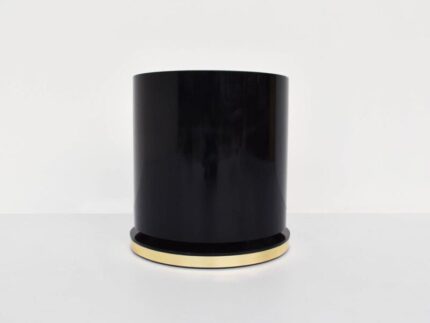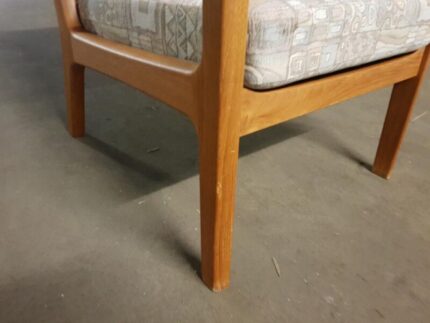The moulded top section rests on a triple fluted and panelled frieze flanked in turn by bobbin and fluted corbels, each have a moulded capping section continuing along the underside of the shelf, these are in turn supported on wide stepped jambs displaying a bolection moulding a chamfered edge outlining the opening aperture, finishing onto splayed architrave blocks with side skirting blocks and moulded capping.
The many shades of soft greys, and occasional veins of red and white, coupled with the many Medrepore (coral rich) shell fossils, makes this piece a joy to look at, this piece would be at home in both a period or contemporary setting with either an insert, fire basket or gas fire.
Fire Opening Size: 1005mm wide x 953mm high
Overall base width: 1512mm
English circa 1870
Ashburton Marble was quarried from the Linhay Quarry at the Eastern end of the town until the mid twentieth century. The lower temperatures and geological pressure underground did preserve many Medrepore (coral rich fossils) and resulted in a grey/charcoal stone, capable of taking a high polish with beautiful patterns of white calcite and red hematite, this marble is perhaps the most famous of all Devonshire marbles, they were formed by earth movements during the Carboniferous period, and the intrusion of the Dartmoor granite which crushed and deformed the surrounding stone.
It contains the fossil remains of creatures that lived in the Devonian Sea 360-380 million years ago, particularly corals, crinoids and brachiopods.
Ashburton marble can be found in the London Hilton Hotel and the Post Office Tower, also in the President Roosevelt Memorial in Washington DC USA.
A Lost Industry-
The Devonshire Marble industry collapsed in the face of cheaper marble being exported from overseas in the mid twentieth century, particularly the white variety from Carrara, Italy. This marble was favoured because it was less dense than Devonshire marble, by the memorial industry which was supplied by Italian companies with pre-carved tombstones and effigies, considerably lowering the price for an impressive monument. The greater, softer, variety of colours and patterns in the marbles from overseas was another factor in the demise of the local industry. Nevertheless, Devon marble is still a beautiful, rich, and sought after material and provides a revealing insight into an Industry that once flourished in the locality.
-
Dimensions:Height: 52.96 in (134.5 cm)Width: 65.75 in (167 cm)Depth: 11.03 in (28 cm)
-
Style:Victorian(Of the Period)
-
Materials and Techniques:MarbleCarved
-
Place of Origin:England
-
Period:1870-1879
-
Date of Manufacture:circa 1870
-
Condition:GoodWear consistent with age and use.
-
Seller Location:Edinburgh, GB
-
Reference Number:Seller: LU3296112518942







































Reviews
There are no reviews yet.